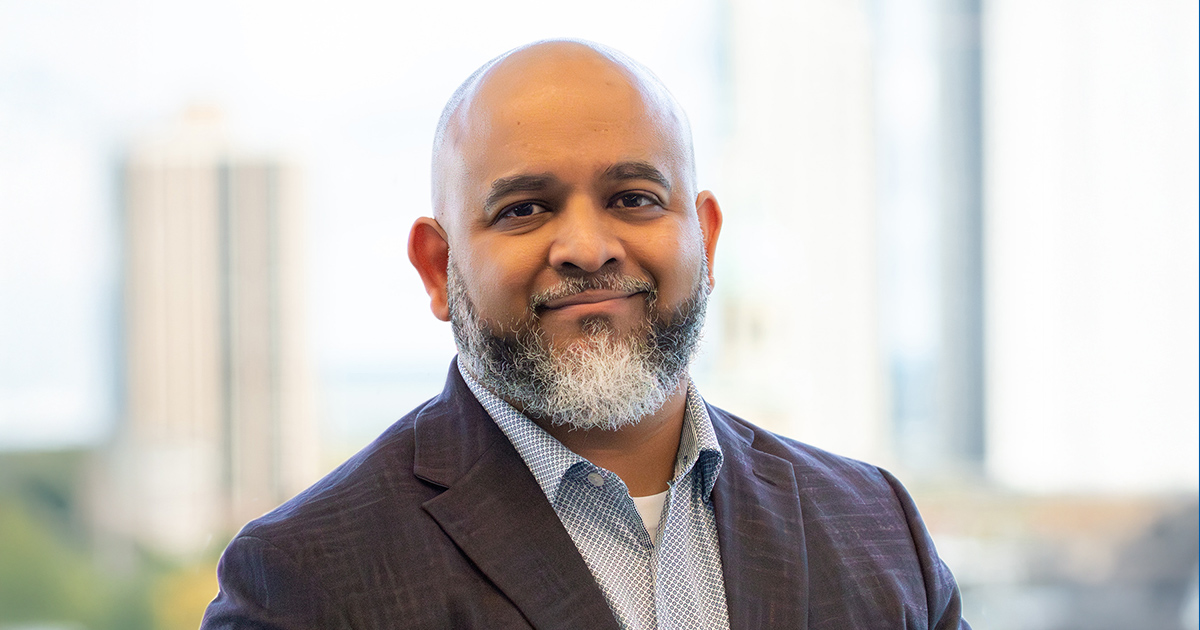It’s all right to tell a man to lift himself by his own bootstraps, but it is cruel jest to say to a bootless man that he ought to lift himself by his own bootstraps.
– Dr. Martin Luther King
All of us have had our levels of resiliency tested in the last eighteen months. Understanding an abstract concept like resilience isn’t easy, but there is value in everyone—especially college students—taking time to reflect on it and make it concrete. The unprecedented barrage of challenges that resulted from the pandemic has hardly allowed students time to reflect on how they’ve tackled the disruptions to their everyday lives, let alone given them time to develop strategies to better adapt to a world transformed.
A handful of North Carolina universities partnered during the pandemic to create a Picturing Resilience project which asked students to contemplate their perceptions about resilience and consider—among other questions—how resilience manifests in their lives.
As a senior at Elon University studying Sport Management and as an intern with NIRSA, I wanted to learn more about this unique project. So, I reached out to Shannon DuPree, Director of Wellness at North Carolina State University, who has played a key role in coordinating the project. Additionally, I sought out George Brown, Assistant Vice Provost and Director of University Recreation and Wellness at the University of Minnesota – Twin Cities and a co-chair of NIRSA’s Health & Wellbeing Task Force, to discuss the concept of resilience and see if he had any insights about how individuals can make that concept more concrete in their lives.
Resilience as a concept
When I asked George about resilience, he was ready to talk. “I’m a huge fan of resilience! But I’ve kind of had an epiphany about it. Everything about resilience is conceptually grounded—from a health model—in what we call the individual domain. Which means each person’s resiliency is going to be greater than, less than, or equal to the person sitting next to them. And there are so many mediating factors that influence individual domain,” George explains.
“And there-in lies the challenge for developing resilience, self-efficacy, grit, determination, hard work, and perseverance. Because when we are conceptualizing something like resilience across a more collective or social environment, we suppose we are meeting people where they are. But that will be inherently hard to do, because, again, your individual resilience may be at a much higher level than mine, and yours is also tempered by where you are at a given point in time,” he adds.
George helped me better understand how many different “cross-sectional” factors go into a person’s capacity for resilience. For instance, what’s going on with a student’s “family, relationships, classes, health, or spirituality?”
While nobody welcomed the COVID-19 pandemic, Shannon explains that it precipitated “this moment of reflection.” During that period of uncertainty, it made individuals more appreciative of “the smaller things we take for granted on a daily basis.” Shannon explains. “That was really the initial concept: to reflect on what 2020 was and, regardless of uncertainties, how we rely on our communities for strength and support to face the challenges ahead.”
North Carolina schools show what resilience looks like
The collaboration between North Carolina State University, North Carolina Central University, and the University of North Carolina-Chapel Hill fostered a beautiful project that encourages proactive thinking and reflection. It also sets a fantastic example of what schools can do to support students through intercollegiate partnerships.
Resilience is great, but not as a crutch
“While it may not be a global pandemic next time, something will happen again. So how do we continue to look forward and find those positive things that give us the inspiration we need to keep progressing in life,” asks Shannon. “This project demonstrates our communities’ ability to navigate obstacles. Resilience in life is crucial for all people,” she adds.
Making sure individuals have plans and strategies in place to achieve resilience in their lives is essential for overall wellbeing moving forward. But it’s not as easy as focusing on resiliency at the level of the individual domain. Campus recreation professionals “all know of the intersections among the wellbeing domains—we’re well versed in those. But with resilience, [we] assume there’s a baseline,” cautions George.
He explains:
“I’m a huge supporter of building personal resilience, but I condition that statement with the qualifier that it can only be truly realized if we accept there is a collective, environmental piece that undergirds personal resilience. I’ll use three words here: policies, systems, and environment. What are we doing for the collective community on campuses to create policies, systems, and environments that create the groundwork—make the ground as receptive and fertile to people having a chance?
When you start to think about the policies, systems, and environment layered into our institutions of higher education of learning, they are very complex and are designed for the egalitarian, maximum benefit for the most involved. When you start doing collective bargaining like that, people are inevitably going to fall between the cracks, and I think it’s incumbent upon us [as higher education professionals] to build resilience in the context of what we are doing tangibly on our campuses.
For example, take campus rec center facilities: Are we closing at midnight? 1:00am? 2:00am? Whatever the time, what are we doing to provide for the safety of the late-night student workers? Do we have policies in place to ensure that the closers aren’t coming back at 8:00am the next day to pull another shift when they’re sleep compromised and negotiating other challenges to their schedules? What are we doing in terms of safety on our campuses? Are there adequate streetlights, blue phones, or an ability to take advantage of apps that provide safety? These questions become incredibly important on an urban campus like we have here in the Twin Cities. What are professors doing about their syllabi? Are they being clear and transparent as to why they’re calling for a midnight deadline on a project? Could it be moved to 5:00pm and avoid undue late-night stress? The things that could be listed here are endless. And my point being, it’s the little things that get us to resilience at the individual domain.
For me, this is where the heavy lifting is. We can talk about self-efficacy, strategies for perseverance and grit, good sleep and hygiene, good physical activity, nutrition, counseling, but at the end of the day, what is the campus, community, and society doing to, in essence, limit some of the unnecessary mental health strain?
I think resilience is great. I just don’t want it to be a crutch for us not to do the hard lift which is to improve the policies, systems, and environments.”
This articulation by George truly helped me think deeper on what resilience means, especially in a campus environment.
Explore resilience on your campus
George and Shannon increased my understanding of resilience. The video project is a model for other institutions and members to follow and George’s insights will stick with us.
As you brainstorm ideas for similar projects or other promotions of wellbeing initiatives, here are a few questions for your campus recreation participants to consider:
- Resiliency looks like…
- What has COVID-19 taught you about taking care of yourself?
- How have you grown as a person during your time in college?
- When have you made yourself the proudest?
- What was a time that you let yourself down?
- How did you turn it around?
- What does it feel like when your life is out of balance?
- Where did you learn how to be resilient?
- Who is the most resilient person you know?
- What helps you relax and manage stress?
- I gain my strength from…
- I find my sense of purpose in…
Keep learning
Learn more about developing resilience, self-efficacy, grit, determination, hard work, and perseverance in students by exploring the resources and materials available in NIRSA’s Learning Library. Login to your NIRSA profile to see member discount pricing, as many resources are free to members.
- If you are interested in highlighting your campus or a NIRSA member’s achievements on your campus, pitch us your ideas.
Charles "Chuck" Steines is currently a student at Elon University and a member of the Elon Club Soccer Team. He is also currently interning at NIRSA Headquarters. You can reach him by email at csteines@elon.edu.







